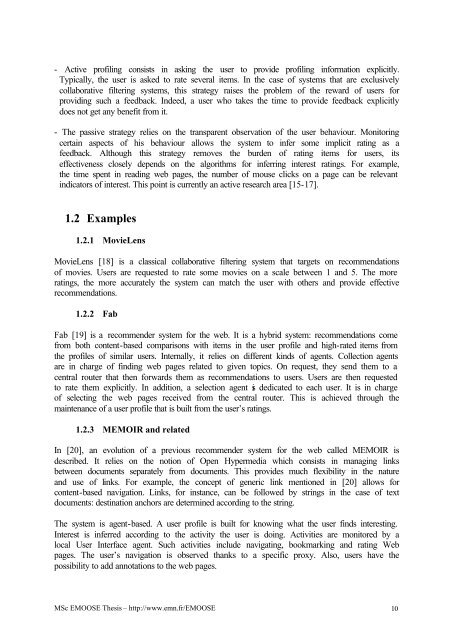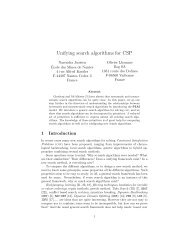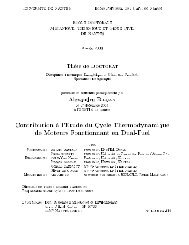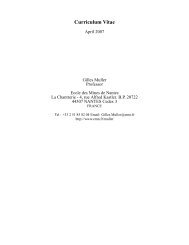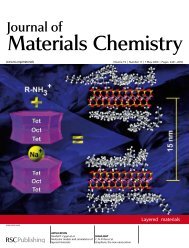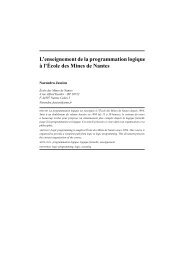pdf - 395 K - Ecole des mines de Nantes
pdf - 395 K - Ecole des mines de Nantes
pdf - 395 K - Ecole des mines de Nantes
You also want an ePaper? Increase the reach of your titles
YUMPU automatically turns print PDFs into web optimized ePapers that Google loves.
- Active profiling consists in asking the user to provi<strong>de</strong> profiling information explicitly.Typically, the user is asked to rate several items. In the case of systems that are exclusivelycollaborative filtering systems, this strategy raises the problem of the reward of users forproviding such a feedback. In<strong>de</strong>ed, a user who takes the time to provi<strong>de</strong> feedback explicitlydoes not get any benefit from it.- The passive strategy relies on the transparent observation of the user behaviour. Monitoringcertain aspects of his behaviour allows the system to infer some implicit rating as afeedback. Although this strategy removes the bur<strong>de</strong>n of rating items for users, itseffectiveness closely <strong>de</strong>pends on the algorithms for inferring interest ratings. For example,the time spent in reading web pages, the number of mouse clicks on a page can be relevantindicators of interest. This point is currently an active research area [15-17].1.2 Examples1.2.1 MovieLensMovieLens [18] is a classical collaborative filtering system that targets on recommendationsof movies. Users are requested to rate some movies on a scale between 1 and 5. The moreratings, the more accurately the system can match the user with others and provi<strong>de</strong> effectiverecommendations.1.2.2 FabFab [19] is a recommen<strong>de</strong>r system for the web. It is a hybrid system: recommendations comefrom both content-based comparisons with items in the user profile and high-rated items fromthe profiles of similar users. Internally, it relies on different kinds of agents. Collection agentsare in charge of finding web pages related to given topics. On request, they send them to acentral router that then forwards them as recommendations to users. Users are then requestedto rate them explicitly. In addition, a selection agent is <strong>de</strong>dicated to each user. It is in chargeof selecting the web pages received from the central router. This is achieved through themaintenance of a user profile that is built from the user’s ratings.1.2.3 MEMOIR and relatedIn [20], an evolution of a previous recommen<strong>de</strong>r system for the web called MEMOIR is<strong><strong>de</strong>s</strong>cribed. It relies on the notion of Open Hypermedia which consists in managing linksbetween documents separately from documents. This provi<strong><strong>de</strong>s</strong> much flexibility in the natureand use of links. For example, the concept of generic link mentioned in [20] allows forcontent-based navigation. Links, for instance, can be followed by strings in the case of textdocuments: <strong><strong>de</strong>s</strong>tination anchors are <strong>de</strong>termined according to the string.The system is agent-based. A user profile is built for knowing what the user finds interesting.Interest is inferred according to the activity the user is doing. Activities are monitored by alocal User Interface agent. Such activities inclu<strong>de</strong> navigating, bookmarking and rating Webpages. The user’s navigation is observed thanks to a specific proxy. Also, users have thepossibility to add annotations to the web pages.MSc EMOOSE Thesis – http://www.emn.fr/EMOOSE 10


